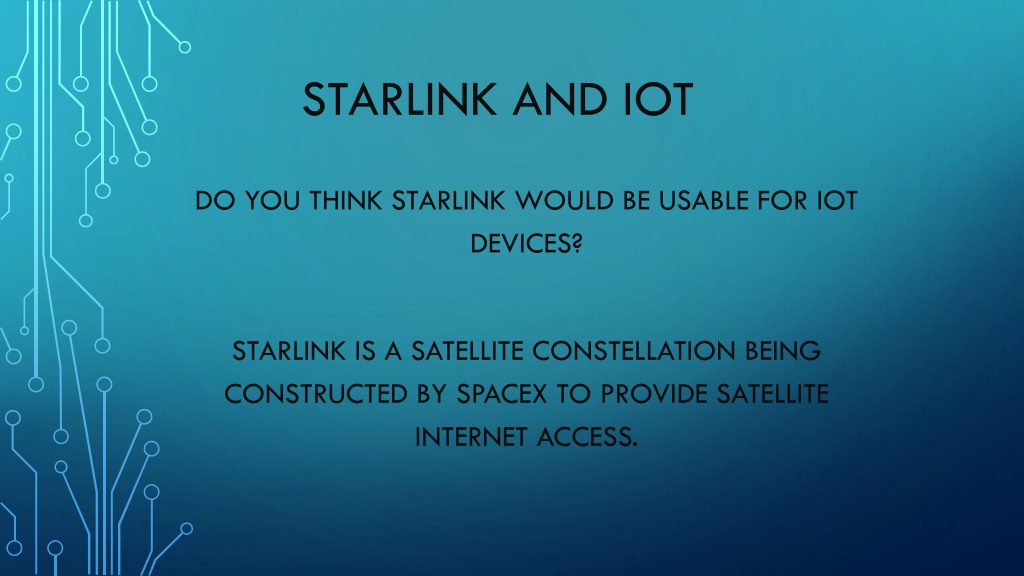Starlink's Potential for IoT Devices Explained
Starlink, the satellite constellation by SpaceX, holds promise for IoT connectivity with its thousands of small satellites in low Earth orbit. The directional antennas required may impact IoT device adoption. However, the global coverage offered by Starlink could revolutionize IoT connectivity in remote areas.
Download Presentation

Please find below an Image/Link to download the presentation.
The content on the website is provided AS IS for your information and personal use only. It may not be sold, licensed, or shared on other websites without obtaining consent from the author. Download presentation by click this link. If you encounter any issues during the download, it is possible that the publisher has removed the file from their server.
E N D
Presentation Transcript
STARLINK AND IOT DO YOU THINK STARLINK WOULD BE USABLE FOR IOT DEVICES? STARLINK IS A SATELLITE CONSTELLATION BEING CONSTRUCTED BY SPACEX TO PROVIDE SATELLITE INTERNET ACCESS.
The constellation will consist of thousands of mass-produced small satellites in low Earth orbit (LEO), working in combination with ground transceivers.
. SpaceX also plans to sell some of the satellites for military, scientific, or exploratory purposes. Product development began in 2015, with the first two prototype test-flight satellites launched in February 2018. A second set of test satellites and the first large deployment occurred on May 24, 2019 UTC when the first 60 operational satellites were launched. The SpaceX satellite development facility in Redmond, Washington, houses the Starlink research, development, manufacturing, and on-orbit control operations.
By design, Starlink requires directional antennas with a narrow beam width -- and physics demands that such an antenna must be about the size of a pizza. If this is acceptable for a particular IoT application (say, where the "thing" is a standard shipping container), then the next factor would be the cost of hardware, which is still uncertain.
The plan for the initial constellation is 72 planes of 22 satellites each. This was modified from 24 planes of 66 satellites each, with SpaceX apparently able to launch to multiple planes at once. All well and good, essentially no change. ISPs have been known to shut down any sort of competition before it gets any momentum, so maybe Elon said they aren t going after the current ISP so that they dont try to take them down.
IoT is a system of interrelated computing devices, machines, animals, and humans with the ability to transfer data and communicate via a network without hu The issue with IoT is that networks rely on cellular, wifi, or Bluetooth service in order to communicate. Yet 90% of the surface of the Earth is not serviced by these communication mediums, such as over open ocean or farmland. man-to-human or human-to-computer interaction.
StarLink: Get Ready for lots of IoT (and lots of space junk)!
Apparently the astronomers are already upset with SpaceX, after a rather small string of 60 of their satellites polluted the night sky with ambient light disrupting their deep space telescopes for about an hour this month. The time-lapse video is pretty cool too (left).

 undefined
undefined























